Join the discussion below
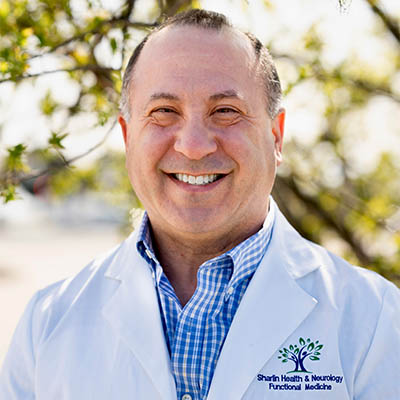
Kenneth Sharlin, MD, MPH, IFMCP
Kenneth Sharlin, MD, MPH, IFMCP, is a board-certified neurologist, consultant, functional medicine practitioner, Assistant Clinical Professor, researcher, author, and speaker. His medical degrees are from Emory University, The University of Virginia, and Vanderbilt University. His functional medicine certification is through The Institute for Functional Medicine. He is author of the... Read More
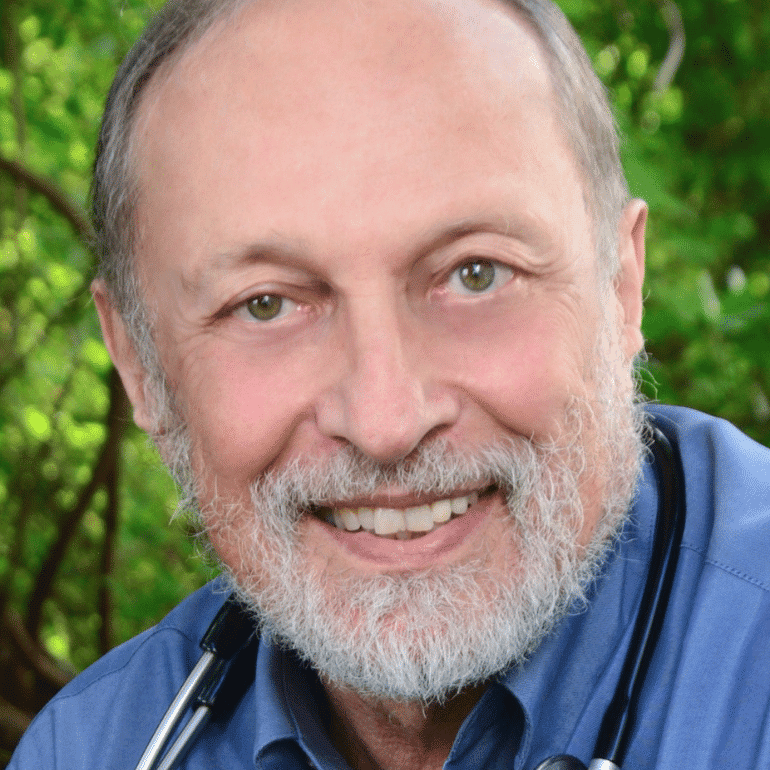
William Pawluk, MD, MSc, author of “Supercharge Your Health with PEMF therapy”, was recently a holistic doctor near Baltimore, MD. Previous academic positions at Johns Hopkins and University of Maryland. Training: acupuncture, homeopathy, hypnosis, energy medicine, nutrition and bodywork. Considered the foremost authority on the practical use of Pulsed Electromagnetic... Read More
- Discover why magnetic field therapy remains a hidden “gem” in Western medicine
- Understand the principles and benefits of Pulsed Electromagnetic Field Therapy (PEMF)
- Learn how PEMF can be a game-changer in the treatment of Parkinson’s disease
- This video is part of The Parkinson’s Solutions Summit
Related Topics
Acupuncture, Als, Clinical Studies, Communication, Devices, Electro-magnetic Field, Electro-magnetic Field Stimulation, EMF, Environmental Magnetic Fields, Fda, Healing, Health, Indications, Inflammation, Magnets, Mechanisms, Medical, Microwaves, Multiple Sclerosis, Off-label Uses, Open Loop, Pain, Parkinsons Disease, PEMF, Regeneration, Science, Stimulation, Stroke, Tbi, Therapy, Tissue Levels, Transcranial Magnetic StimulationKenneth Sharlin, MD
Hello, I am Dr. Ken Sharlin and welcome to the Parkinson’s Solutions Summit. I hope you have been enjoying the videos we have shared with you so far, and stay tuned for many more. Today, I am delighted to bring an expert in the field of Pulsed Electromagnetic Field Therapy to you, Dr. William Pawluk. He hails from the Baltimore, Maryland, area, and he is going to tell you a little bit about himself. But Dr. Pawluk and I have known each other for some time.
He is one of a handful of practitioners who has really opened my mind to the idea that various forms of energy have therapeutic benefits in medicine, not just the drugs that we prescribe or the surgeries we make referrals for. All are valuable, of course. In fact, in another episode of the Parkinson’s Solution Summit, we even hope to talk to you about how some of that is combined, Deep Brain Stimulation is a surgical treatment, but it is the electrical stimulation of deep brain centers that provides the therapeutic benefit in that modality. Well, without further ado, I am welcoming Dr. William Pawluk to your video screen today. Dr. Pawluk, thank you so much for joining us.
William Pawluk, MD, MSc
You are very welcome. If I can call Ken, you can call me Bill.
Kenneth Sharlin, MD
Absolutely.
William Pawluk, MD, MSc
Dr. Bill or Dr. P.
Kenneth Sharlin, MD
Dr. Pawluk, Bill, could you tell us a little bit about your background, how you got interested in this, and some of the work that you have done to really raise your status as a thought leader in this field?
William Pawluk, MD, MSc
Thank you for that intro, Ken. As a family physician, I have been a family doctor for a long time. Board certified in Canada; Board certified in the U.S. My training was originally Canadian. Then I moved to the U.S. I moved to work at Case Western University at Rutgers University, eventually ended up at Hopkins and then Maryland, and had faculty positions in those places. When I worked in New Jersey, I was working for a group practice, and we had the largest family medicine practice on the whole East Coast. But there were 14 family doctors, and in that group, of course, we shared patients. That meant that we made rounds at the hospital on our patients. We all worked together in a very short period of time. I had like three admissions to the hospital, one of whom died from gastric bleeding. The gastric bleeding was caused by nonsteroidal anti-inflammatory ibuprofen specifically, in their cases. I said to myself, This is insanity. This is insane medicine. We are having people die from their treatment for pain. The pain was not going to kill them, but the treatment will, an early death. I said, This is insanity.
One definition of insanity is doing the same thing over and over again, not expecting any negative results. That is one of Einstein’s variants, I think. I said, I’ve got to do something different. I have to learn a different way of dealing with pain other than narcotics. At that time in the 80s, we were still encouraged to prescribe opioids, but not as much as in the last 20 or 30 years. I said, We’ve got to do something different. I did not want to have people have procedures, and I did not want to have surgeries. I tried to avoid all these things. I said, I got to do something different. I decided to study acupuncture. I did a program through UCLA for physicians, and at the end of that training in 1990, I came out armed with needles. Have needles that will travel? But the problem is that people did not.
In fact, I actually did needle therapy on people on a train heading to and into New York City. A woman sitting across from me was green, and she had been drinking too much. So I put needles in her ears and toned them out. It was absolutely phenomenal therapy. But the problem is that in 1990, people did not know about acupuncture. Stay away from me with those needles. Do not come near me. I said, Well, how am I going to do acupuncture if I can do needles? I found out that they do magnets in the Orient—little magnets on acupuncture points, on the ears, hands, you name it. I started looking at magnets and started using magnets. I actually did a nerve conduction study with a physiologist friend of mine, where we put magnets on acupuncture points along the path of the nerve. Sure enough, magnetic fields affected that transmission. Well, I got going, and I started using them a lot.
I started discovering that magnets were doing other things than acupuncture. They were actually working on the local tissue. They were taking inflammation down in the local tissue. Magnetic acupuncture therapy works very indirectly in the body. It stimulates the flow of energies in the body, which in turn stimulates organs and organic function. But magnets had the additional benefit of actually working at the tissue level where you put them. That kind of woke me up, and I said, Okay, there is something here. Unfortunately, most of the scientific information that was available about magnets in physiology and using them in biology was largely hidden in the Eastern European literature. They were summaries that were summarized from Russian articles, Ukrainian articles, or, you name it, Eastern European articles.
I met an M.D., Ph.D., along the way who said he translated Eastern European literature for his Ph.D. He had a manuscript so I told him I was interested in doing something and bringing more science to the West. Not just the theories, not just sales pitches, and so on. I want the science. He gave me the manuscript. I redid the manuscript and wrote a book called Magnetic Therapy in Eastern Europe, a review of 30 years of research.
Kenneth Sharlin, MD
Wow.
William Pawluk, MD, MSc
That kind of blew the gates wide open in terms of magnetic therapy, what it did, and even how it works. They had clinical studies, they had animal studies, they had test tube studies, in vitro in people, but also in humans. A significant aspect of that was that they had done a lot of human research and many controlled studies. Again, wow, this is legitimate science. It has been hidden, because it was inaccessible to people in the West.
Kenneth Sharlin, MD
Why do you think that is? Just curious.
William Pawluk, MD, MSc
Well, in universities, people become acculturated and enculturated. People have to speak English. You have to go to conferences to talk to English-speaking doctors. But even today, it is a problem. Today there are three reasons I say that there are people who are not more widely known. The first reason is ignorance. There are two kinds of ignorance. I want to remain ignorant. I do not want to know and there is ignorance simply because they have not read the literature. Because it is not in the medical literature.
Kenneth Sharlin, MD
Right. Some of the languages that we often speak
William Pawluk, MD, MSc
Language, mechanisms, and so on. Exactly. Although it is more and more common now with MRI, it is more common with transcranial magnetic stimulation of the brain. As devices become approved, medicine has known about magnetic field therapy for the use of nonunion fractures—fractures that will not heal for 25 years. It has been approved for over 25 years. But we tend to think in terms of what the indications are. We do not think mechanically about what this technology is doing to create the benefit that is great, and therefore, what other possible purposes would there be? There is a lot less availability and ability to use devices off-label than there is the ability to use medication off-label. You and I could do medication off-label any way we want, but if we are going to get a device from the company that makes a device for nonunions, they want to know why you are prescribing it. That is not prescribed for federal approved indication. You cannot have it. I want to do off-label stuff to look at other uses of their technology. You can only do it in an IRB.
Kenneth Sharlin, MD
Institutional Review Board Review
William Pawluk, MD, MSc
Review Board. That might be a formal study. To submit a formal study, you have to have approval of the study. All of that stuff that that company tried to get a new indication for their device beyond the nonunion fractures And they were going to have to spend half a billion dollars to get a new indication from the FDA.
Kenneth Sharlin, MD
Wow.
William Pawluk, MD, MSc
That is horrible. That kind of destroys that field. To be able to experiment, expand, and look at other ways of using magnetic therapies. Fortunately, there has been a lot more research done with transcranial magnetic stimulation, which is a topic that we are going to deal with today, and that has been through the uses that have been approved for treatment-resistant depression. Yes, but there is a huge body of literature on the use of that same technology across the brain for a whole host of other conditions. Parkinson’s has been one of those conditions that has been studied reasonably well.
Kenneth Sharlin, MD
Yes, I did a brief literature review before we started our interview today, just out of curiosity, and I immediately found 29 articles. I am sure there are more, but PubMed showed me 29 articles on PEMF and Parkinson’s disease immediately.
William Pawluk, MD, MSc
Expand that list. You go to multiple sclerosis, you go to ALS, you go to stroke, and you go to TBI, brain injuries. For the literature, I actually did a review. I published a review article on the use of magnetic field therapy and high-intensity magnetic fields for TBI, and it also published review articles. This is a large body of literature now. I think it is getting bigger every day.
Kenneth Sharlin, MD
What exactly is pulsed electromagnetic field therapy? If you hear us, by the way, use the shortened term PEMF, that is what PEMF stands for. Dr Pawluk?
William Pawluk, MD, MSc
The concerns that everybody has is EMF. That is the elephant in the room. Let us get rid of the elephant right away. EMF is, I call it, Environmental Magnetic Fields. EMF stands for Electro Magnetic Fields, or what I call Environmental Magnetic Fields. Those environmental magnetic fields were introduced to us—to humans or to humanity—for communication purposes. They were not introduced for healing or medical purposes, except for the indications that we are going to talk about. As a result, these fields are broadcast to the environment.
The scientific term for it is Open Loop. It is out into the environment. It just goes on forever. They are high-frequency, which is where we have concerns. This is where we have the concern about five Gs. Because they get absorbed by the body. Those wavelengths are extraordinarily short. They go out through the environment, and we are all bombarded by them. Because they are very short wavelengths, they get absorbed. This is how a microwave oven works. That is the whole principle behind a microwave oven: to cook whatever. If you take a cell phone to your ear and you hold it there and you are talking for quite a while, you take the cell phone away from your ear, and you will see it is going to be bright red.
Kenneth Sharlin, MD
Yes.
William Pawluk, MD, MSc
The opposite ear is not, maybe slightly red, but not bright red. What you are doing to your ear when you have your cell phone or your microwave to your ear as you are cooking it?
Kenneth Sharlin, MD
It is terrible.
William Pawluk, MD, MSc
That is EMF; that is broadcast into the environment. EMFs are designed with a completely different mechanism and a completely different design process. Basically, it is a machine that produces a current flow through a wire, and that wire then produces a magnetic field. So think of my thumb as the wire conducting current, that current pulsing, and that wire, whatever pulse rate we design. When it pulses that, the magnetic field goes out and comes back out and comes back; it is a closed loop. It is not broadcast in the environment it emits because of the current flowing through the wire.
That is a law of physics. Maxwell’s equations. Maxwell’s law is Faraday’s law. Faraday’s law: Faraday, Michael Faraday, in the 1800s, discovered that the pulse of current has a coil and a light bulb in that loop. No current is flowing in that loop, but there is a light bulb connected in that loop. If you pulse a wire past that wire, the light bulb lights up. That is called Faraday’s Law of Electromagnetic Induction. That is the key principle behind how that works versus EMFs. PEMFs are not EMFs. Completely different technology.
Kenneth Sharlin, MD
To be clear, PEMF has been studied and found safe to use in humans.
William Pawluk, MD, MSc
Well, more to the point, we talked about PEMF being approved by the FDA for treating treatment-resistant depression. I will tell you what they do with that PEMF shows how powerful it is. It is powerful enough to take a coil and put it to the motor cortex, put it over the side of the head where the nerves that control the movement of muscles are, put it over that spot, and crank up the intensity until they get a movement of the hand. You are actually causing, in a sense, a seizure. You are stimulating the nerves to be able to contract on the other side of the body. Someone who is strong enough can cause a muscle contraction in their hand. That is called the motor threshold, then.
Kenneth Sharlin, MD
Maybe we are using the term. I do not want to scare people with this, it is going to cause a seizure. But I think, if I may if I understand, what you are saying is that when seizures occur, and we are talking about focal seizures, they are occurring in a discrete area of brain tissue, and there is a synchronous firing of a group of nerve cells that manifests outwardly, which is what we observe as a seizure. Then we are talking about taking a device and stimulating nerve cells in the brain, causing them or bringing them to a threshold where they will fire their electrical activity. We call that an action potential or threshold. We are not actually causing someone to convulse with this. We are just
William Pawluk, MD, MSc
Control.
Kenneth Sharlin, MD
Controlling. Yes, we are harnessing, or we are saying, we are just going to take this group of nerve cells. We are going to be able to take control of it and have the outcome that we actually desire.
William Pawluk, MD, MSc
That outcome is used all the time. It has been used by hundreds of millions of people, and it is extraordinarily safe. It is just that the government considers chemotherapy to be safe and therefore low-risk. When you have done that, what they do—that is called the motor threshold—you establish the motor threshold. They say, Okay, fine, and you take the coil away and crank it up to 125%. Now, this is directed right at the motor cortex. That is going to affect those motor nerves. But then they take that same coil at 125% and put it over the frontal lobe. That is what they use for treatment-resistant depression. They do thousands and tens of thousands. In my second book, Power Tools for Health, I go over the safety PEMF, and they have looked at hundreds of thousands of pulses in a very short period of time for even older people with no risk. It is a very safe technology. One of the most sensitive areas of the body, of course, is the brain.
Kenneth Sharlin, MD
Yes.
William Pawluk, MD, MSc
I would say they are probably going to be safe in most other places.
Kenneth Sharlin, MD
Now, we have talked about its use in pain management, say with a joint that gives folks an alternative to the use of anti-inflammatory medicines in your personal experience. Then, of course, now we are talking about using this device on the brain. Dr. Pawluk, could you just give me kind of an overview of some of the other areas, really the breadth of applications for this type of device?
William Pawluk, MD, MSc
Well, I think this is the way we think in medicine. We think about the application or the indications, and in my two books, Power Tools and Supercharge Your Health, I outlined 27 different actions of magnetic fields and biological actions. It’s a physiologic action. There are 25, 27 of these actions. That is irrespective of whatever is going on as a condition. Those actions are happening all the time, every time we use magnetic field therapy. All of those actions are possible in the body. If you take that population of actions and then you take it as a disease or condition, say, what is the pathophysiology of that condition? That is the way I think of pathophysiology. Then I am going to affect the physiology and that pathophysiology and then produce outcomes.
There are about 25 actions on the shortlist. It is inflammation reduction, stimulating stem cells, improving circulation, reducing inflammation and nitric oxide production, and wound healing, you can accelerate wound healing. Wounds heal in about half the time that they normally take with magnetic therapy because you are also increasing ATP in the tissues’ energy; you are creating the energy, and then that energy is used by the body to do whatever work it wants to do. Then in the first book, I did a review of the science of 50 different health conditions, whether it is through 50 different health conditions and the different races, and some of the research that was available for those 50 health conditions in the application of PEMF therapy. We link the biophysical actions to the pathology and to the condition.
Kenneth Sharlin, MD
Kind of like saying we are going to look at all the root causes of a given condition and then realize that wait, PEMF’s check a lot of these boxes.
William Pawluk, MD, MSc
Exactly. Correct. Included is the endocannabinoid system. We now have research to say that magnetic field therapy stimulates the endocannabinoid system. We know that magnetic field therapy stimulates the adenosine receptor. By stimulating the adenosine receptor, you help with inflammation. The threshold was discovered with PEMF therapy and the adenosine receptor. That threshold optimal level is about 15 gauss. That is really key to what we are going to talk about with Parkinson’s or any other neurological condition: you want to reach that threshold of 15 gauss at the tissue.
Magnetic field therapy is like radiation therapy. You have to calculate your dose and start off with the higher dose to get to the target tissue. If the target tissue needs to be 15 gauges, then you can use 15 gauges as your starting point. It has to be a lot higher. If you try to treat across a whole brain from one side to the other, you have an applicator here, and if you want to reach the other side, you are going to need about 4000 Gauss. And again, I have it on the table about that.
Kenneth Sharlin, MD
As we pull the magnifying glass back a little bit and look at the big picture of Parkinson’s, I want to remind folks that Parkinson’s is a movement disorder, but it is more than just a movement disorder, it is a brain disorder. But in terms of common symptoms and common presenting problems, we are beginning to see a change in posture, slowness of movement and rigidity, a change in facial expression, and a loss of fine motor control. But then we are also going to see changes in mood and behavior, potentially. There is some evidence that those changes may actually precede the appearance of the motor symptoms in Parkinson’s. It may have also heralded those motor symptoms—changes in the architecture of sleep. The intrusion of these REM sleeps behavioral disorders in Parkinson’s changes that are cognitive but not necessarily that typical short-term memory type problem we associate with Alzheimer’s disease.
There may be more subtle cognitive changes like visual-spatial changes, how you can coordinate what you are seeing with what you are doing with your hand. For example, in what we call a trial test or a clock drawing test, you have to connect certain dots with numbers and letters or draw numbers around a clock. I offer that just to give folks, now, just back up for a minute and realize that Dr. Pawluk has already mentioned many specific mechanisms by which PEMF can help with a given condition. Thus, it is helpful for many conditions because it is not diagnosis-specific. But what we do know from the literature is that when we break down Parkinson’s disease into these specific symptoms or signs, there is evidence that PEMF does improve many of these signs. Can you share a little bit more about that?
William Pawluk, MD, MSc
Yes. In fact, how do we typically treat Parkinson’s, aside from the rehab that you need to provide functional assistance to the body that the body needs in those conditions? Medications are only about 50% effective, and they do not stop progression. People often stop taking modern medication. Then they have to keep adjusting the dose, and you have to add another medication. Some people need three or four different medications to be able to get adequate control. Even then, it is not healing. You are not reversing. It is helping mostly with symptoms, but not all symptoms either. I think it does not work well for some things it does, but that is our reliance. Then we have the side effects from the medications that we have to contend with. But part of therapy, like, for example, we are talking about going to read some stuff that I have here.
Let us say, yawning. Yawning and stretching are dopamine functions. Dopamine is decreased in Parkinson’s, that is the basis behind medication, for the most part. Magnetic field therapy increases yawning and stretching. Therefore, it is increasing dopamine. Smells are affected. Freezing, which is the motor component. But freezing is not just the motor component; it’s initiating the motor activity. For example, like the brain we just talked about, I can appreciate motor activity by stimulating those cells, and they begin to function. The PEMF therapy basically stimulates dopamine levels; it stimulates those parts of the brain. If you do treatment with PDE for the motor cortex, all sorts of things improve, including the psychological and cognitive things that you were talking about.
Kenneth Sharlin, MD
Yes. It is remarkable because, like you say, we might have to, typically use a strategy. We were treating a motor symptom with one drug, a mood symptom with another drug, or maybe autonomic dysfunction with drops in blood pressure, commonly seen in Parkinson’s, with another drug. We need to get you working because constipation is a huge problem, and we may then give you some hormones because low testosterone is a big problem in Parkinson’s. Now, that is not to say that all of these can’t be helpful or are not helpful. They are potentially helpful. But we’ve got this tool in the toolbox now that really can have a much more global effect and maybe potentially reduce the reliance on individual medicines for individual problems.
William Pawluk, MD, MSc
Absolutely. Even for dopamine, all the drugs that are used for dopamine research have shown that magnetic field therapy will allow you to decrease medication because symptoms are really because of the chemotherapy. Even if you want to continue with medication, magnetic field therapy and medication work hand in hand. Now, as you may need a lot less of a dose of medication to get the same benefit and then get all the other benefits of chemotherapy as well into the brain. For example, freezing; freezing is a motor part of it. People initiate activity before they freeze. But they could be in the middle of motor activity and freeze then too. But most commonly, when people start their initial activity well enough, therapy has been approved to reduce freezing by 50% and falling by about 80 to 90%.
Kenneth Sharlin, MD
Fantastic. This should be in every movement disorder clinic. There is no doubt about it. Right?
William Pawluk, MD, MSc
Should be.
Kenneth Sharlin, MD
Why we do not know about this, Dr. Pawluk?
William Pawluk, MD, MSc
We do. We want to ignore it because it is not FDA-approved. You and I can use it as clinicians. That is our prerogative. Ask questions to use it. Yes, but if you go to a hospital or a clinic, they have to abide by the FDA. The hospitals are controlled by Medicare and therefore the FDA, so you cannot just get it in unless it has been approved.
Kenneth Sharlin, MD
Yes. Now, there are some different types of approvals, just to be clear, that have still happened. For example, there are device approvals. That has to do with the FDA saying this is safe to put on your head, for example. Correct? There is device clearance, safety approvals, and indication approvals, meaning it is approved by the FDA to treat depression and Parkinson’s disease.
William Pawluk, MD, MSc
ost often, the safety aspect, which is the least important, is the most important for us because we do want to be harmed by it. People do not seek safety testing without getting an indication. You cannot sell it for a specific purpose, like Parkinson’s disease unless you have an indication approval as well as safety approval.
Kenneth Sharlin, MD
Now, just as a side note, we are talking about the cell phones earlier. I am not sure that the FDA has said anything about the safety of cell phones yet. It is approved for sale in the United States, so we can communicate with one another.
William Pawluk, MD, MSc
That is because it is not sold as a medical device. It is always a communication device. That is the domain of the FTC, not the FDA or the FCC.
Kenneth Sharlin, MD
Right. Yet, how often do we find that technology that we lose the use of in our lives in our homes many years later and may have some considerable safety concerns? Because I am not trying to get into politics or anything, but now there is a bunch swirling around in Congress just over gas stoves in your home, or recently, the information came out about the artificial sweetener, aspartame, causing breaks in your DNA. That is not even well. I guess a gas stove is a form of energy, but we are talking about the carbon monoxide side that fills your home when you use it. Devices that are widely available are not necessarily safe, but this is a safe device.
William Pawluk, MD, MSc
There, again, they have approved for other things. Eventually, you have to demonstrate with mountains of evidence, like cigars smoking was known to be a big problem, but they had to accumulate mountains and mountains of evidence to be able to deal with the lobbies from the companies that make and sell those other products. Nevertheless.
Kenneth Sharlin, MD
There is another exciting dimension because, for the most part, we have talked about treating symptoms. We have talked about some mechanisms of disease like chronic inflammation, and the aspect of PEMF that stimulates nitric oxide, which is a vasodilator, among other things. It is going to bring not only blood flow, which means oxygen but also nutrients to the tissue level, where healing can occur. Growth factors are right. Something else that is very important that gets into this concept of, can PEMF actually be a device that heals a disease potentially and there is some evidence to support that.
William Pawluk, MD, MSc
Well, we know that PEMF therapy can increase stem cell production and be used in order to heal something or repair damage in the body. You need to have stem cells to repair the damage, but you also need the growth factors that go along with that. Just giving stem cells to somebody is not enough. You have to give growth factors as well, and PEMF does both.
Kenneth Sharlin, MD
Well, these are the mesenchymal stem cells we often talk about in regenerative medicine that exist in tissues throughout the body, including things like bone marrow and fat tissues that come out at times of injury and inflammation and are critical to our normal biological healing process.
William Pawluk, MD, MSc
PEMFs increase all of those dendrocytes and the stem cells that are important for creating myelin and even neural cells may increase those. There was actually a study sponsored by NASA on neural stem cells and neural stem cell growth. What they found is that 24 hours of a fairly low-intensity magnetic field at ten cycles per second, ten hertz, caused a 400% increase in stem cell production.
Kenneth Sharlin, MD
That is fantastic.
William Pawluk, MD, MSc
It stimulated about 140 growth factors.
Kenneth Sharlin, MD
Dr. Pawluk: There are different types of PEMF devices, things that can be used in the clinic, things that would be used at home that one could actually purchase and use, and privacy there at home. Could you explain a little bit about the different types of devices and what they would actually look like? What would someone do with a device when it arrived?
William Pawluk, MD, MSc
I cover a lot of this practically in my book, Supercharge Your Health, and I have got tables in the book about the different kinds of magnetic devices, whether it is low intensity versus medium intensity, that need the intensity of the magnetic field that we mentioned, 2,000 to 4,000 Gauss across the brain so the intensity matters. We talk about local versus treating a chest versus treating a brain versus treating an elbow. Different levels of magnetic fields would be used at different locations. For the brain in particular, we need a high-intensity machine that is going to be able to treat the whole brain. We do not want to just treat one spot on the brain. Expect all these results and benefits from that.
That research has been established for that. But interestingly enough, when you are treating this part of the brain, what part of the brain is getting treated with magnetic fields? The whole brain. Yes, limit it to one area because the magnetic field goes right through the whole brain itself. All kinds of devices are available, and I would recommend getting that book, Supercharge Your Health. Now, for the brain, we want higher-intensity research. The research has been done on Parkinson’s and MS, for that matter. Research is very limited; it is time-limited, and it is device-limited. There are certain assumptions that people use for that study and for that research that then limit the ability of that research to be applicable. Make that most of the time.
The problem with research is that it is not done long enough. If I do research on your brain for, say, freezing disorders, I am doing it in a clinic setting or in a hospital setting with a device that is hard to own because it is very expensive and they only do it for a short period of time. They only have so much money. They say they are hot. It worked. But will it heal? Will they have a sustainable benefit? Most of the time, when it comes to neurological issues, we rarely cure them. So like a cut, if you stimulate a cut with a magnetic field, they will heal in half the time. When you stimulate the brain for PD, you are going to see improvements in PD function. Some of those improvements can last hours or days. Rarely do they last months, and rarely are they permanent. In a clinical setting, in a research setting, you are limited in how much you can do.
The results are therefore limited, but the results often show us that you need to repeat the treatment over and over and over again. For example, we discovered with depression that initially the treatment programs and protocols that were FDA-approved were short-term, like a week, and they are looking for benefits in a week. But they discovered that people had basically regressed after the week, after some amount of time. They regressed often; within a week, they regressed. Then they started extending the protocols. Now the protocols are going out to 70 treatments instead of five. What that’s showing us is that we need treatment for many conditions, particularly chronic conditions like the brain in particular. You are going to need treatment over a long period of time.
Kenneth Sharlin, MD
That brings us to a very important point, which is that now these devices that are available for you to purchase will bring value to your condition and the healing journey that you are on. You can not only get one of these devices for yourself, but you can also get some guidance on choosing the device, using the device, etc. As we start to wrap up our outstanding interview with Dr. Pawluk, I want him to explain a little bit more about what I am talking about—these consultations that folks can get. Because ultimately, you’ve got to understand what you’re getting. You’ve got to be able to use it properly to get the benefit.
William Pawluk, MD, MSc
It is very important; make it an extraordinarily important point. People are being sold PEMF devices by representatives and salespeople; essentially, the most common ones are multilevel marketing companies. The salespeople know very little about PEMF therapy. All they know is their machine, and they know very little about medicine or how to apply it and get the most benefit from it. I already mentioned intensity matters. If the machine that you are getting is not 15 gauss; if it is not even more than 15 gauss, do not get it. You are going to spend $6,000 for a machine that is going to help stimulate your acupuncture point, but it is not going to do anything deep. It is not going to work deep in the body. You have to ask, Where are you buying it from? What is the intensity? Then ask yourself: in the case of Parkinson’s disease, we are talking about intensity having to go into the brain—deep into the brain at least, well, let us say three or four inches from one side to the middle.
Kenneth Sharlin, MD
Yes.
William Pawluk, MD, MSc
You could see from the other side that drop-off you can treat from the other side as well, or you get one machine that’s going to be able to treat the whole brain at the same time.
Kenneth Sharlin, MD
Okay.
William Pawluk, MD, MSc
That requires about $4,000. We provide consultations. The landscape is very confusing. Even when you read my book, Supercharge Your Health, you can still end up confused because it is not about you, your specific situation, or your specific problem. More importantly, I do not know how many people with Parkinson’s do not have other problems.
Kenneth Sharlin, MD
Yes, that is common
William Pawluk, MD, MSc
Our focus is articulation problems. You name it.
Kenneth Sharlin, MD
We have to be very careful. We’ve got to be very careful, for sure. Folks need to find out, and they should find out and tell you more. How can they get in touch with you?
William Pawluk, MD, MSc
Well, first of all, I would recommend getting the book Supercharge Your Health, DrPawluk.com DrPawluk.com has a ton of information, and that may be hearsay by itself, but I assure you that there is a lot of science here, and there is a lot of value to this equipment beyond Parkinson’s. Then, number three, we will provide consultation. If you go to Dr. Pawluk.com, on the home page, you will see something on the right side that says apply for consultation. People can get free consultations from our team, from my medical team, and then we can advise you on what the best magnetic therapy machine is going to be for you. Warning. If you expect to heal yourself with a $10 machine, forget about it.
Kenneth Sharlin, MD
Hey, I am from New Jersey too, so
William Pawluk, MD, MSc
I had to say, Forget about it. I lived in the New Jersey, too. You are really going to probably have to get a piece of equipment. It will most likely cost you a lot of money. When I say expensive, we are talking a minimum of $5,000. But this is something you are going to use. This is an investment. This is something you are going to use for the rest of your life. When you have Parkinson’s, you need it for the rest of your life.
Kenneth Sharlin, MD
Folks, yes, you are going to have to make this investment, and you are going to have to use it. You are going to have to use it. Purchasing that and letting it collect dust in a corner has no therapeutic benefit whatsoever. There is a time commitment.
William Pawluk, MD, MSc
It is not great-looking furniture.
Kenneth Sharlin, MD
Well, Dr. William Pawluk, this has been a fascinating discussion about Pulsed Electro Magnetic Field therapy, or PEMF for short. There is so much, I am sure, that we could discuss further on this subject. But another time, as they say, I so much appreciate you coming to the Parkinson’s Solution summit. I know this information is going to help folks suffering from Parkinson’s disease.
William Pawluk, MD, MSc
I appreciate you inviting me to communicate with your group and your summit audience, and hopefully they will benefit.
Kenneth Sharlin, MD
Have a wonderful day, Dr. Pawluk. We will talk again soon.
Downloads

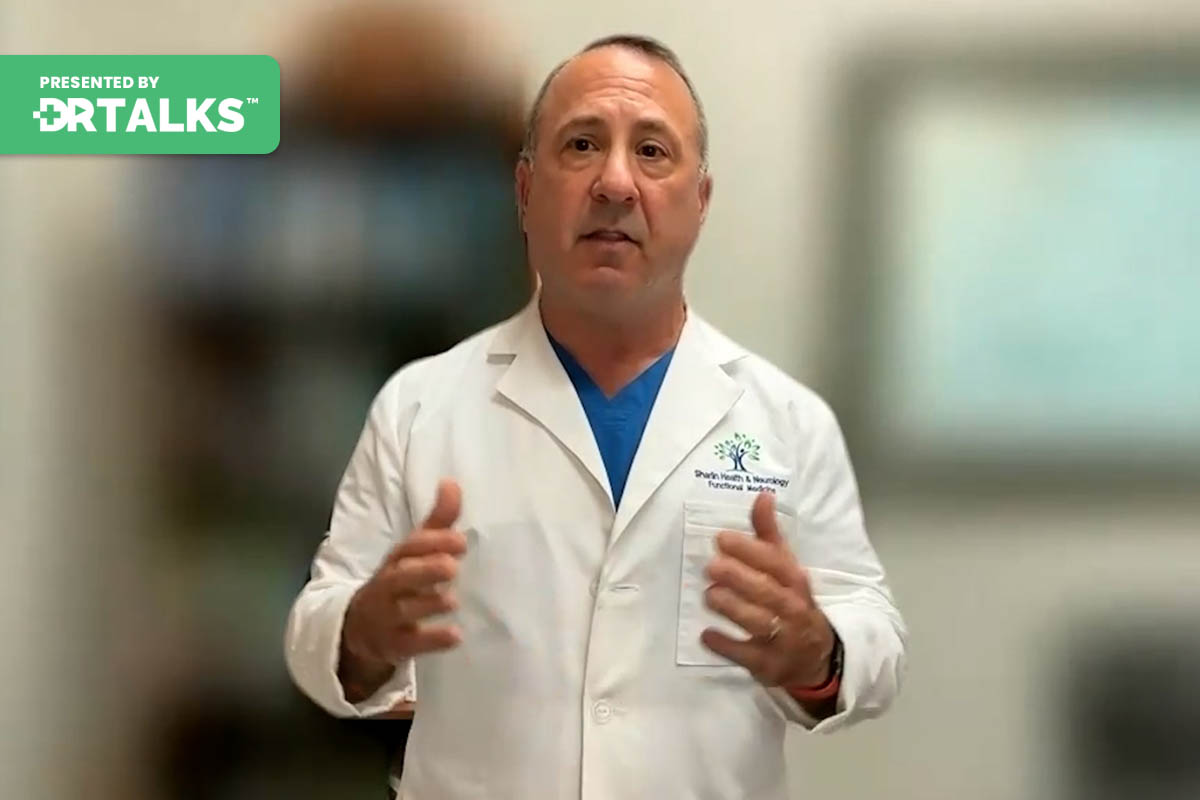
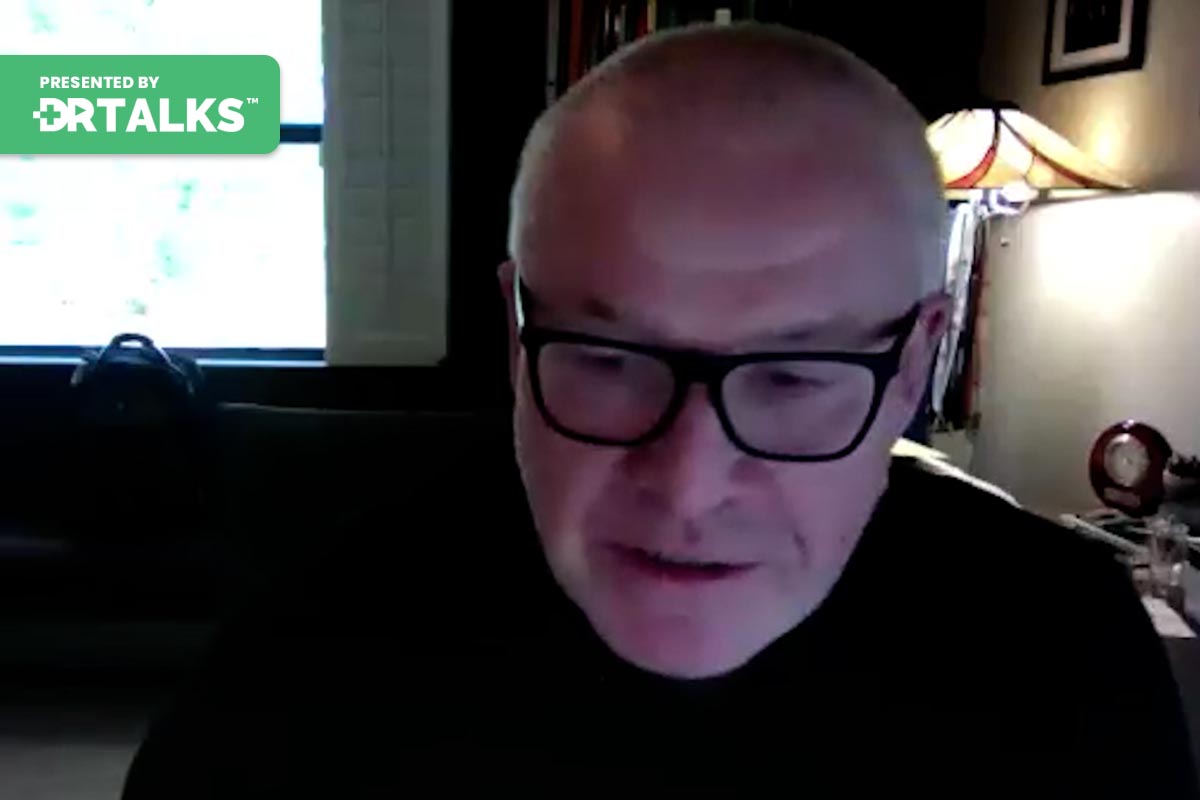
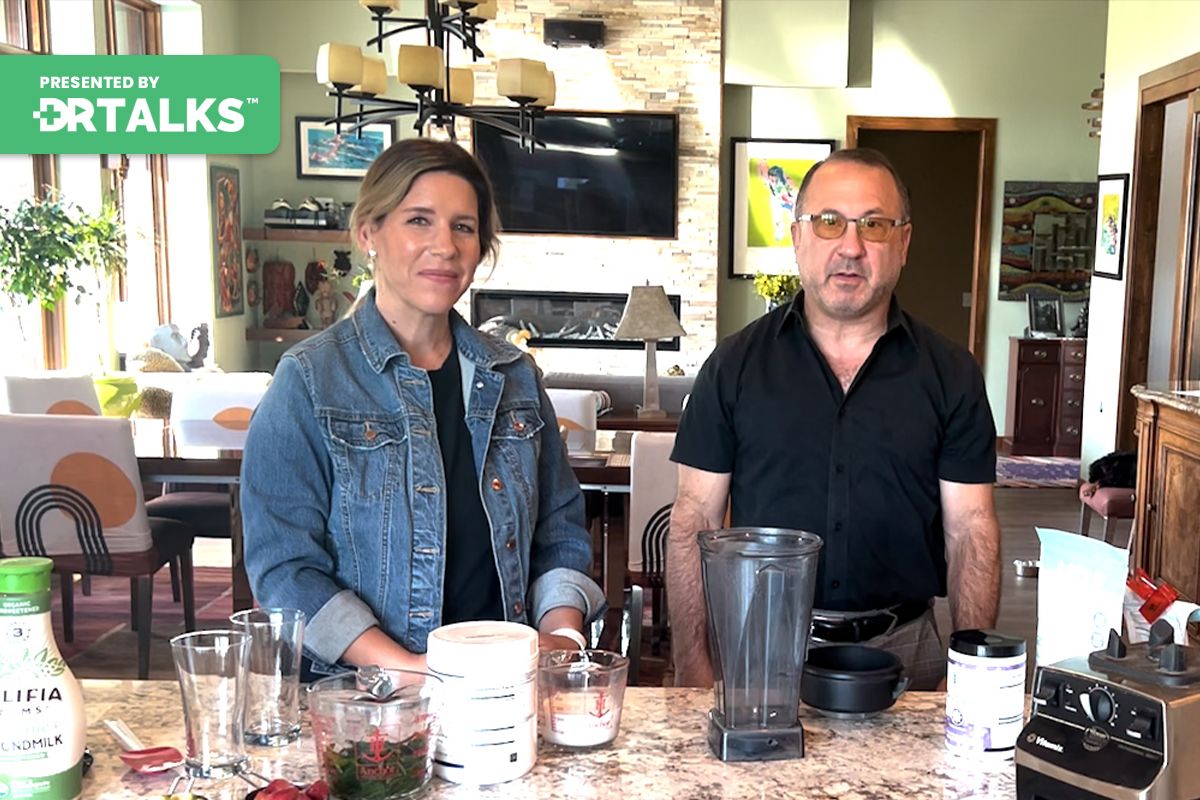
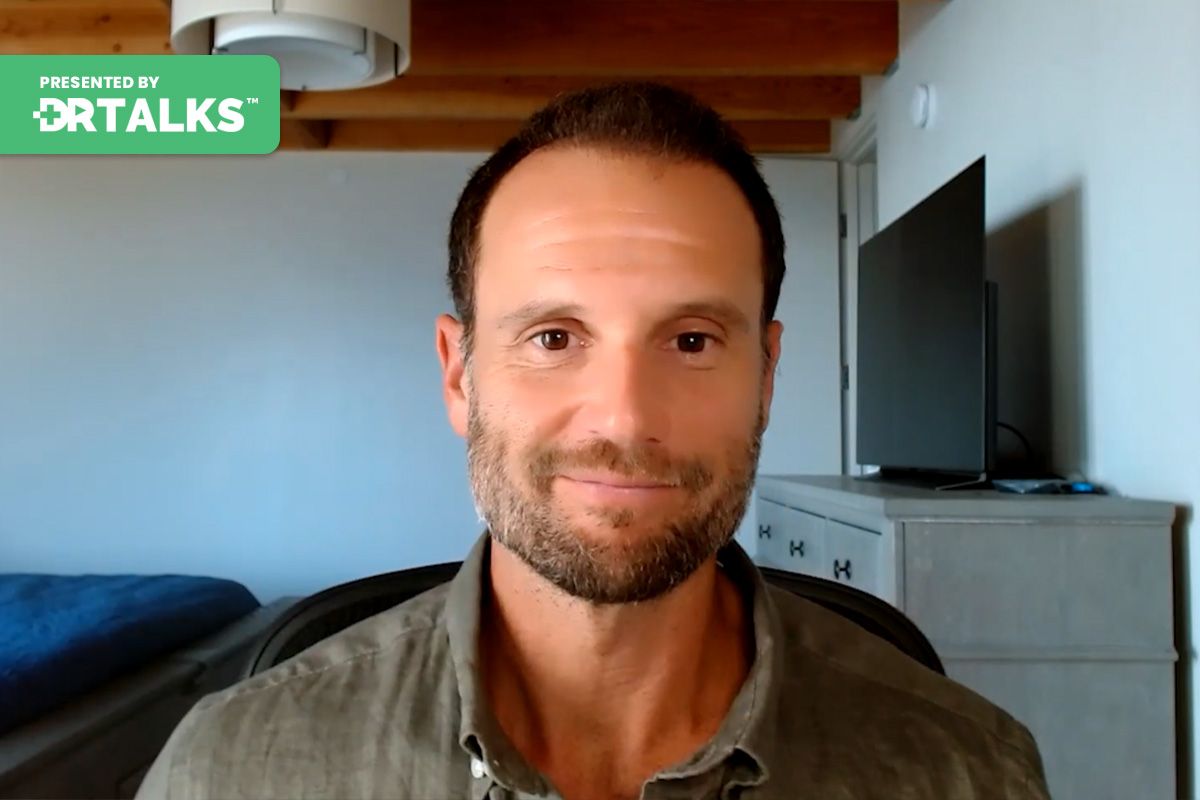
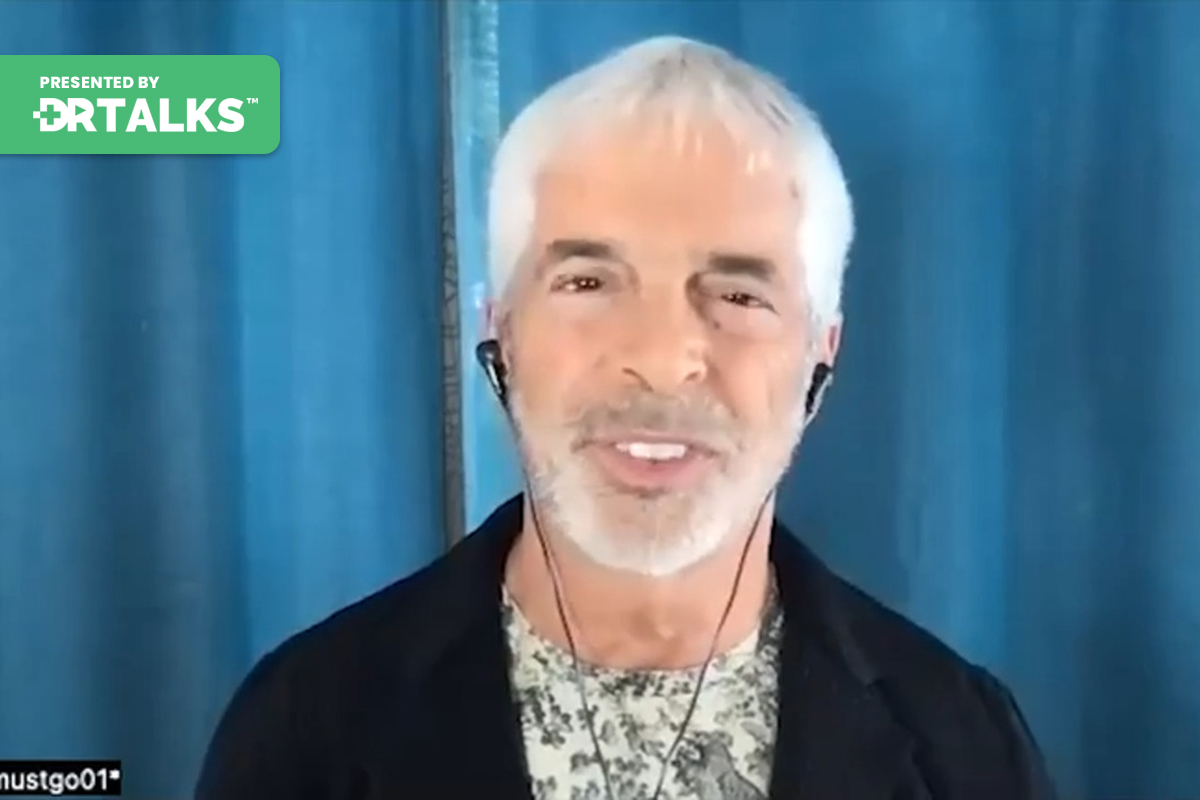



🌟 **”Fascinating insights on Pulsed Electromagnetic Field Therapy (PEMF) from Dr. William Pawluk! ⚡**
Dr. Pawluk’s journey from a traditional family physician to a pioneer in PEMF therapy is truly inspiring. His determination to find alternative pain treatments after witnessing the adverse effects of conventional medications is commendable. 🌿💊 His exploration into acupuncture and eventual discovery of the therapeutic benefits of magnetic fields showcases his innovative mindset. The way he integrates Eastern European research into Western medicine is a testament to his dedication to bringing comprehensive and effective treatments to his patients. 🌍📚
🧠 The discussion on the applications of PEMF, especially in treating neurological conditions like Parkinson’s, highlights its potential to revolutionize the way we approach chronic illnesses. Dr. Pawluk’s emphasis on the importance of understanding the science behind PEMF and its various mechanisms is crucial for both patients and practitioners. His explanation of the different intensities and applications of PEMF devices sheds light on how personalized and targeted treatments can be. This approach not only alleviates symptoms but also promotes overall healing and wellness. 🌟🔬
**Have you ever tried or considered alternative therapies like PEMF for chronic conditions? What are your thoughts on integrating such innovative treatments into traditional medical practices?”** 💬